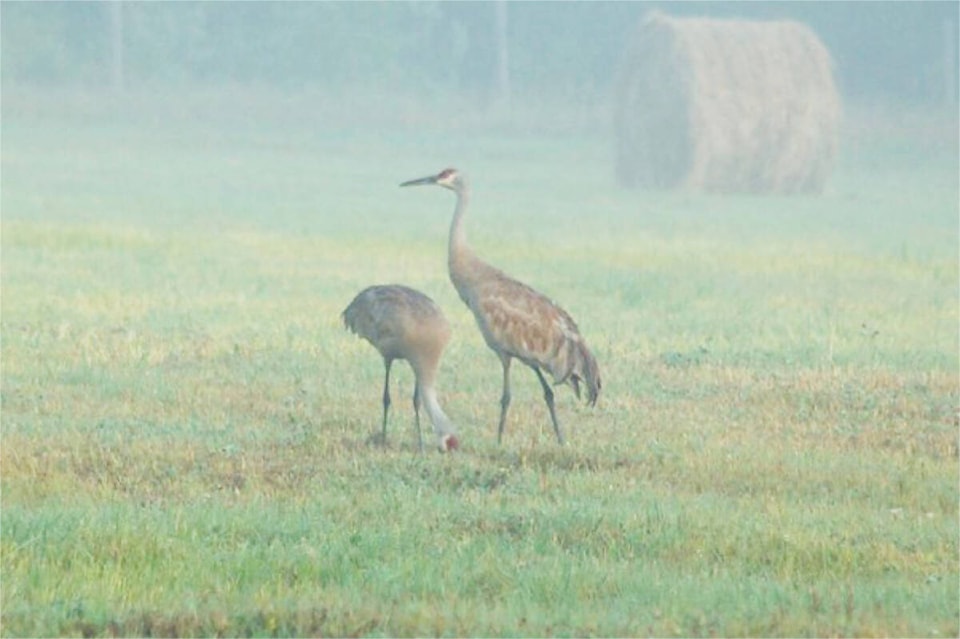Jami Crego
Special to Tribune
The sandhill crane is a reclusive, transient resident of the Cariboo-Chilcotin, more frequently heard than seen. These ancient birds are unique in many ways, one of which is their loud, undulating calls that can carry for 2.5 miles and are enabled by their coiled tracheas.
Their vocalizations also include purrs, croaks, and rattles.
There are fifteen crane species worldwide, of which sandhills are the only species to nest in Canada.
Among our largest North American birds, they are over a meter tall with a wingspan two meters or greater; an adult weighs two to four kilograms. They have a bare, red forehead, bright white cheeks, a slate gray body and long black bill and legs. One of the oldest bird species, they have existed since the Eocene age ended 37 million years ago; through fossil and skeletal comparisons, no significant change has been found within the species over the past 10 million years.
They have outlasted over 99 per cent of the species to have ever existed, possibly due to their adaptability and long term memory. Cranes have been revered by many cultures throughout history, and we are fortunate to have them here.
Sandhills require secluded nesting sites, so often they are only seen during migration or near summer’s end when their chicks, called ‘colts’, have matured.
They arrive in British Columbia between March and May and return south through September and October. Exuberant courtship dances are routine in the spring and help birds find lifelong mates around three years of age although they don’t reproduce until five to six years old.
Their late sexual maturity is mitigated by their long lives: on average, they live 20 years, but the oldest tracked lived to 37. Cranes will also dance spontaneously; pairs can be seen touching bills as if to kiss.
Sandhills nest and forage on the ground in marshes, bogs, hayfields, and pastureland, but will use conifer forests to hide.
They have followed the same migration patterns for thousands of years; pairs reuse nesting sites, and their offspring may drift with a flock of ‘single’ young cranes, but usually settle in familiar areas.
A female will lay two eggs although often only one colt will survive to fledge. Within eight hours of hatching, these precocious young birds are able to leave the nest. They remain close to their parents until nine or 10 months of age, when they leave to join a flock of non-breeding cranes for several years.
While rearing young, pairs guard their territory from others, then regroup for fall migration. Cranes are omnivorous and consume aquatic plant matter, seeds, roots, tubers, invertebrates, worms, and small mammals such as mice.
Human activity can interfere with historical staging sites of sandhill cranes, plus damming, agricultural use, and other human caused changes can disrupt and ruin nesting and foraging sites; colts hiding in hayfields can be killed by farming equipment.
The increase in wind farms is affecting ancient bird migration routes; their placement needs to be revised. So far, the birds have recovered from near extinction in the 1800’s and 1900’s due to the US Migratory Bird Act of 1916’s interventions, and remain a yellow listed, ‘secure’ species through B.C. conservation status reports, but with a population of under ten thousand, people should continue to protect crane migratory staging areas, nesting sites, and minimize impacting their habitats during human activities such as fracking and wetland damming.
They are sensitive to disturbances, and with a low chick survival rate and late breeding age, could easily return to the species at risk list.
